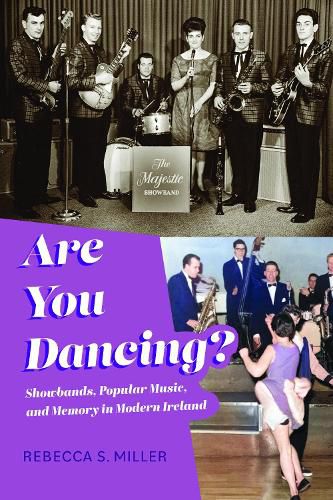Readings Newsletter
Become a Readings Member to make your shopping experience even easier.
Sign in or sign up for free!
You’re not far away from qualifying for FREE standard shipping within Australia
You’ve qualified for FREE standard shipping within Australia
The cart is loading…






From the mid-1950s to the mid-1970s, showbands were all the rage among Ireland's dancing audiences. Performing covers of rock 'n' roll and pop hits from American and British weekly Top 10 charts, they riveted their fans, dismayed many parish priests, and offered Irish youth a taste of modernism and pop culture from outside of Ireland.
In Are You Dancing?, Rebecca S. Miller tells the story of how these working-class bands brought new sounds and choreographies to the Irish and Northern Irish pop landscape. Both as a response to and an agent in Ireland's changing economic landscape, showbands quickly grew into a hugely lucrative commercial industry. At the same time, they nudged open doors for Irish women to take to the stage as pop stars, rewarded a generation of entrepreneurs, and created the template for Ireland's popular music industry. Miller draws upon interviews with more than 80 musicians, agents, managers, fans, and clergy, to reveal the vast interplay of social, economic, and cultural changes that ensued with the Irish showband era.
Drawing upon an extensive catalog of ethnographic and archival research, Miller presents an overlooked era of musical performances that revolutionized Irish entertainment.
$9.00 standard shipping within Australia
FREE standard shipping within Australia for orders over $100.00
Express & International shipping calculated at checkout
From the mid-1950s to the mid-1970s, showbands were all the rage among Ireland's dancing audiences. Performing covers of rock 'n' roll and pop hits from American and British weekly Top 10 charts, they riveted their fans, dismayed many parish priests, and offered Irish youth a taste of modernism and pop culture from outside of Ireland.
In Are You Dancing?, Rebecca S. Miller tells the story of how these working-class bands brought new sounds and choreographies to the Irish and Northern Irish pop landscape. Both as a response to and an agent in Ireland's changing economic landscape, showbands quickly grew into a hugely lucrative commercial industry. At the same time, they nudged open doors for Irish women to take to the stage as pop stars, rewarded a generation of entrepreneurs, and created the template for Ireland's popular music industry. Miller draws upon interviews with more than 80 musicians, agents, managers, fans, and clergy, to reveal the vast interplay of social, economic, and cultural changes that ensued with the Irish showband era.
Drawing upon an extensive catalog of ethnographic and archival research, Miller presents an overlooked era of musical performances that revolutionized Irish entertainment.